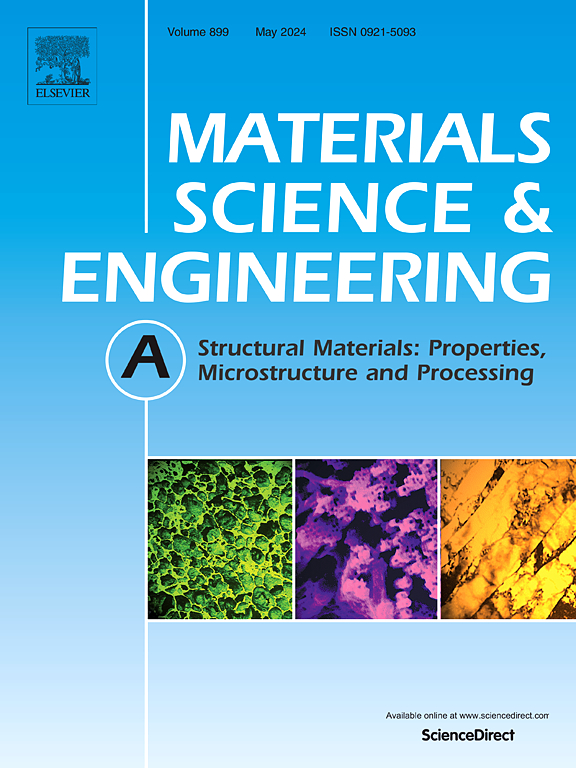Dislocation cell-mediated nanosized carbide precipitation enables ultrastrong AISI D2 tool steel fabricated via laser-powder bed fusion
IF 7
2区 材料科学
Q1 MATERIALS SCIENCE, MULTIDISCIPLINARY
引用次数: 0
Abstract
AISI D2 tool steels possess considerable advantages in various industrial applications, but its fabrication through laser-powder bed fusion (L-PBF) is still challenging due to the high thermal stress and high carbon content, resulting in severe crack formations. In this study, we adopted both pre-heating and hatch spacing adjustment to overcome the crack phenomenon, and microstructures and mechanical properties were investigated for successfully fabricated specimens according to the post heat treatment. The most characteristic microstructural feature of the L-PBF D2 tool steel in its as-built sample was film-like M7C3 carbides decorated with dislocation cells. After the heat treatment, the morphologies of film-type carbides in the as-built sample transformed to nanosized particulates in the martensitic matrix, and the crystal structure also changed from M7C3 to M23C6. The L-PBF D2 tool steel showed exceptionally superior strength in both the as-built (1199 MPa) and heat-treated samples (2110 MPa) without severe sacrifice of ductility. The pre-existing carbide network structure located on the dislocation cells in the as-built sample enabled a fine distribution of nanosized carbides after heat treatment, which contributed to the significantly high strength of the present alloy. These findings imply that the dislocation cell structure-mediated precipitation successfully strengthened the L-PBF D2 tool steel, suggesting novel strategies for microstructural design of high-strength alloys utilizing L-PBF.
位错细胞介导的纳米碳化物沉淀使激光粉末床熔合制备的超强AISI D2工具钢成为可能
AISI D2工具钢在各种工业应用中具有相当大的优势,但由于高热应力和高碳含量,其通过激光粉末床熔合(L-PBF)制造仍然具有挑战性,导致严重的裂纹形成。在本研究中,我们采用了预热和调整舱口间距的方法来克服裂纹现象,并根据热处理后的结果对成功制备的试样进行了显微组织和力学性能的研究。L-PBF D2工具钢最显著的显微组织特征是带有位错胞的M7C3碳化物。热处理后,构建样品中的薄膜型碳化物形态转变为马氏体基体中的纳米级颗粒,晶体结构也由M7C3变为M23C6。L-PBF D2工具钢在铸态(1199 MPa)和热处理试样(2110 MPa)中均表现出异常优异的强度,而塑性没有严重损失。在热处理后,位于位错胞上的碳化物网络结构使得纳米碳化物的分布更加精细,从而使合金具有显著的高强度。这些结果表明,位错胞组织介导的析出成功地强化了L-PBF D2工具钢,为利用L-PBF设计高强度合金提供了新的策略。
本文章由计算机程序翻译,如有差异,请以英文原文为准。
求助全文
约1分钟内获得全文
求助全文
来源期刊

Materials Science and Engineering: A
工程技术-材料科学:综合
CiteScore
11.50
自引率
15.60%
发文量
1811
审稿时长
31 days
期刊介绍:
Materials Science and Engineering A provides an international medium for the publication of theoretical and experimental studies related to the load-bearing capacity of materials as influenced by their basic properties, processing history, microstructure and operating environment. Appropriate submissions to Materials Science and Engineering A should include scientific and/or engineering factors which affect the microstructure - strength relationships of materials and report the changes to mechanical behavior.
 求助内容:
求助内容: 应助结果提醒方式:
应助结果提醒方式:


